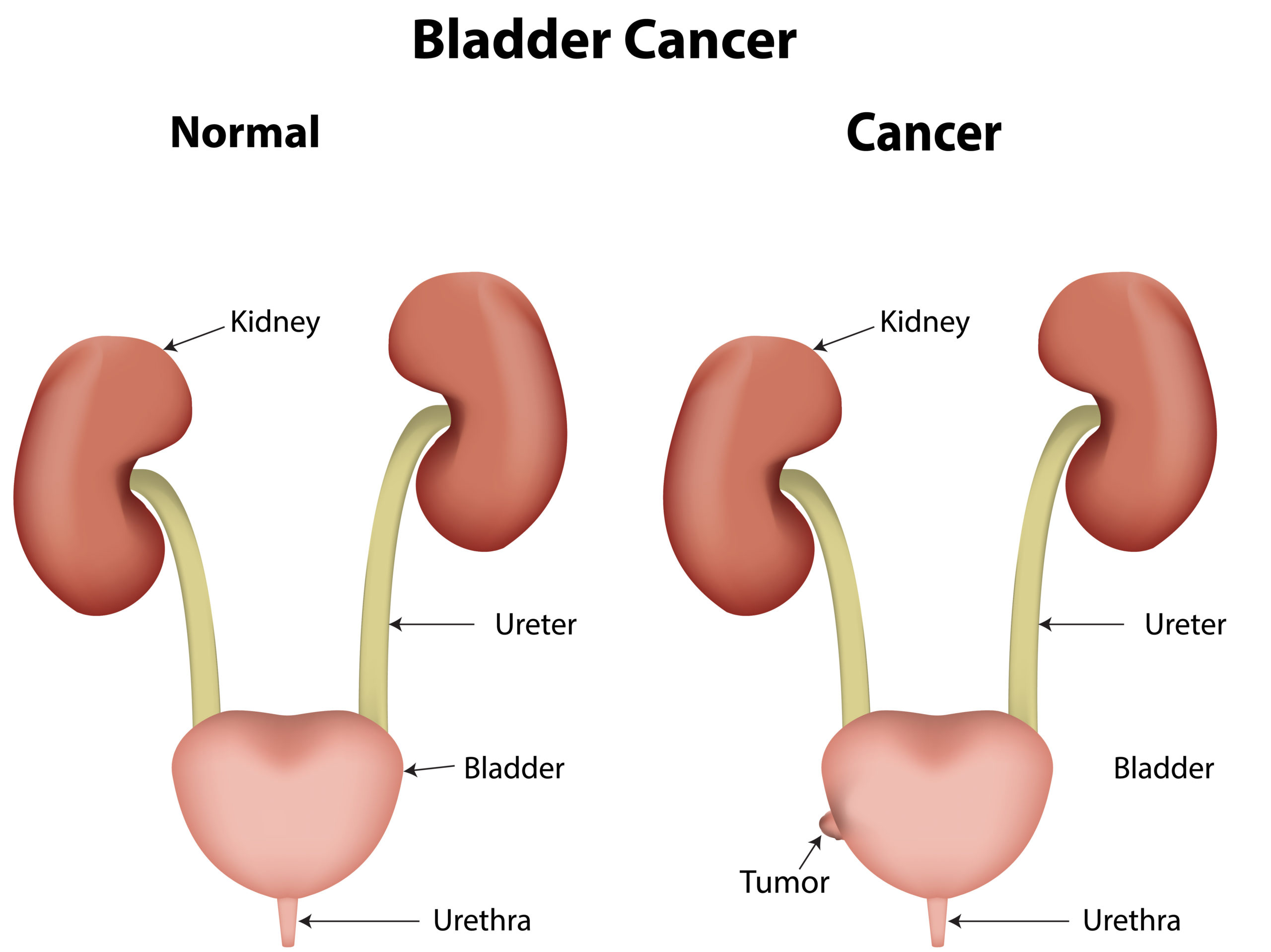Bladder Cancer
Bladder Cancer
What is Bladder Cancer?
The bladder is a hollow organ in the lower pelvis. Its main job is to store urine, and its flexible, muscular walls are lined with urothelial cells. Bladder cancer begins when healthy cells change and grow out of control, forming a tumor. Cancer that develops in the renal pelvis and ureters (tubes leading from the kidneys to the bladder) is also considered a type of bladder cancer and is often called upper tract bladder cancer.

Symptoms of bladder cancer include:
- Blood in the urine
- Frequent urination
- Needing to urinate many times during the night
- Pain or burning during urination
- Feeling the need to urinate even when your bladder isn’t full
- Having trouble urinating or having a weak urine stream
Symptoms of advanced bladder cancer may include:
- Being unable to urinate
- Lower back pain on one side
- Loss of appetite and weight loss
- Feeling tired or weak
- Swelling in the feet
- Bone pain
How does one test for bladder cancer?
Physical exam and health history. Includes checking for lumps or anything else that seems unusual, and taking a history of the patient’s health habits, past illnesses, and treatments.
- Urinalysis. Urine is analyzed for its color and its contents, such as sugar, protein, red blood cells, and white blood cells.
- Urine cytology. A sample of urine is checked under a microscope for abnormal cells.
- Cytoscopy. A hollow tube called a cystoscope is inserted into the urethra (the tube that carries urine out of the body) and then into the bladder. The lens in the cystoscope allows a doctor to examine the bladder lining.
- Imaging (CT Urogram).
- Biopsy. Usually done during cystoscopy, cells or tissues in the bladder are removed and then viewed under a microscope by a pathologist to check for signs of cancer.
What are the major risk factors for bladder cancer?
- Smoking. The most important risk factor for bladder cancer, smoking causes about half of all cases in both men and women. Bladder cancer is at least three times as likely to occur in smokers compared to non-smokers.
- Age. Bladder cancer risk increases with age. More than 70 percent of people with bladder cancer are older than 65.
- Gender. Men are four times more likely to develop bladder cancer than women, but women are more likely to die from bladder cancer than men.
- Race and ethnicity. Whites are about twice as likely to develop bladder cancer as African Americans and Hispanics. However, African Americans are twice as likely to die from the disease. Asian Americans and Native Americans have slightly lower rates of bladder cancer.
What are other risk factors for bladder cancer?
- Having a personal history of bladder or other urothelial cancer.
- Having a family history of bladder cancer.
- Having certain changes in genes linked to bladder cancer.
- Being exposed to paints, dyes, metals, or petroleum products in the workplace.
- Past treatment with radiation therapy to the pelvis or with certain anticancer drugs, such as cyclophosphamide or ifosfamide.
- Taking Aristolochia Fang Chi, a Chinese herb.
- Drinking water from a well with high levels of arsenic.
- Drinking water treated with chlorine.
- Not drinking enough fluids, especially water.
- Having a history of bladder infections, including bladder infections caused by Schistosoma haematobium.
- Using urinary catheters for a long time.
- Rare bladder birth defects.
